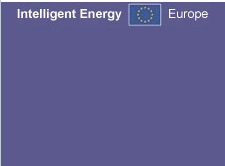





Introduction
At the start of the BEHAVE project at the end of 2006, the influence of human behaviour on climate change was still debated. Today there is general consensus on the urgent need for radical transitions. Policies and programmes aiming to have on effect on consumers' habitual and planned (investment) behaviour, will have to take the increased awareness and motivation for change into account.
In Work Package 2 of the Project, various behavioural theories were reviewed with a view to their applicability in the development and evaluation of energy-related behavioural change programmes. Theory demonstrates that behaviour is a complex phenomenon. It is a product of factors both internal (attitudes, values, habits and personal norms) and external to the individual (fiscal and regulatory incentives, institutional constraints and social practices). Instruments needed to address behavioural and planned (investment) behaviour are different. Combination of various instruments (communicative, economic, fiscal and structural) may have the most effective impact on addressing the internal and external factors.
The PRECEDE-PROCEED Planning Model (Green and Kreuter), was proposed to be used to put the theories into practice in the development of new programmes and in the case analysis carried out in the Project. The model consists of three phases. First, a behavioural and contextual analysis is made and programme goals are established in line with policy objectives. Second, the corresponding determinants influencing the target group behaviour are analysed. These are predisposing factors (motivating behaviour), enabling factors (facilitating behaviour) and re info rcing factors (providing feedback). Third, the instruments are chosen, that influence the relevant determinants most.
In Work Package 3, behavioural change programmes and projects implemented in Europe were analysed. First, info rmation was collected on almost one hundred cases from 11 countries using a structured template. Next, some cases from this inventory were selected for analysis, based on multiple criteria such as geographic distribution, coverage of various topics, target groups and instruments as well as availability and quality of evaluation data. As a result, more detailed info rmation was collected on 40 cases which were subject to meta-analysis.
 |
|
|||||||||||||
|
|
|
|
|
|
 |
|||||||||
 |
||||||||||||||
|
|
|
|
|
|
|
|
|
|
||||||
 |
 |
|||||||||||||
 |
||||||||||||||
|
|
|
|
|
|
|
|
|
|
|
|
|
|
|
|